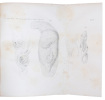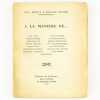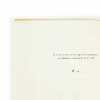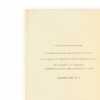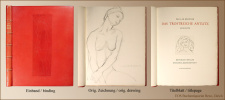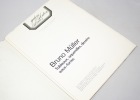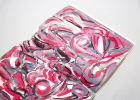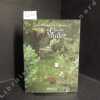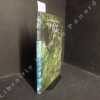3831 books for « muller j p »Edit
-
Type
Autograph (3)
Book (3806)
Disk (1)
Drawings (2)
Engraving (2)
Magazine (7)
Music sheets (9)
New book (1)
-
Latest
Last 3 days (2)
Last month (80)
Last week (11)
-
Language
English (4)
French (3809)
German (8)
Greek (1)
Russian (9)
-
Century
16th (7)
17th (2)
18th (37)
19th (326)
20th (1484)
21st (305)
-
Countries
Belgium (273)
Canada (7)
China (1)
Côte d'Ivoire (4)
Denmark (118)
France (2712)
Germany (1)
Greece (5)
Italy (8)
Spain (5)
Switzerland (686)
United Kingdom (3)
United States of America (8)
-
Syndicate
ALAC (7)
CLAM (4)
CLAQ (2)
CNE (3)
ILAB (1744)
NVVA (243)
SLACES (243)
SLAM (1282)
SNCAO (5)
Topics
- Alps (21)
- Alsace (131)
- Ampelography - wines (24)
- Animals (12)
- Aquitaine (10)
- Archaeology (65)
- Architecture (41)
- Asia - orient (8)
- Astronomy (10)
- Basel (9)
- Belgium (11)
- Bible (10)
- Bibliography (9)
- Biography (36)
- Birds (11)
- Botany (26)
- Brittany (11)
- Children’s books (63)
- Christianity (18)
- Cooking (28)
- Dauphiné (24)
- Dedication (13)
- Deroy (9)
- Detective novels (16)
- Dictionaries (11)
- Drawings (16)
- Early printed books (11)
- Economics (34)
- Education (23)
- Education - morals (14)
- Egypt (14)
- Engravings (9)
- Entomology (12)
- Ethic (12)
- Fashion (9)
- Fine arts (40)
- First edition (25)
- Fishing (10)
- Florence (24)
- Forez (10)
- Geography (43)
- Germanic languages (166)
- Germany (42)
- Greece (12)
- Helvética (194)
- History (207)
- Humour anecdotes (12)
- Ile de france (10)
- Illustrated books (9)
- India (9)
- Industrial arts & crafts - fine arts (20)
- La tour du pin (11)
- Law (30)
- Linguistics (20)
- Literature (234)
- Magazine (26)
- Medicine (63)
- Military arts (35)
- Muller charles (45)
- Muller eugène (75)
- Müller herta (13)
- Muller jean (31)
- Muller joseph-emile (35)
- Muller martine marie (24)
- Muller rené (19)
- Music (10)
- Navy (14)
- Newspapers press (33)
- Painters (24)
- Painting (20)
- Palaeontology (9)
- Pastiche (13)
- Philology (12)
- Philosophy (66)
- Photography (22)
- Poetry (11)
- Policy (18)
- Psychiatry neurology (17)
- Psychology (37)
- Reboux paul (28)
- Regionalism (33)
- Religions (51)
- Review (22)
- Reviews (28)
- Scandinavian literature (10)
- Sciences (27)
- Scores (31)
- Songs (11)
- Sports (10)
- Switzerland (192)
- Theatre (16)
- Theology (37)
- Travel (26)
- Various (28)
- Viticulture (18)
- War (39)
- Wine (29)
- Youth (15)
- Zoology (12)
- Zurich (17)
Über den glatten Hai des Aristoteles, und über die Verschiedenheiten unter den Haifischen un Rochen in der Entwickelung des Eies. [In: Abhandlungen der Königlichen Akademie der Wissenschaften zu Berlin. Aus dem Jahr 1840]. - [ESTABLISHING ARISTOTLE AS THE FOUNDER OF BIOLOGICAL SCIENCE]
Berlin, 1842. 4to. Entire volume of ""Abhandlungen""... and ""Mathamatische Abhandlungen""... 1840 present. Contemporary yellow boards with a vellum-like spine. Handwritten title to spine. A bit of wear and soiling to extremities, and corners bent. Internally fine and clean. Stamp to title-page (Dom-Gymnasium Magdeburg, also stamped out). Pp. (187)- 257 + 6 plates, two of which are folded. Text very nice, bright, and clean, plates with a bit of brownspotting. [Entire volume: (6), XVII, (5), 400 pp. + 10 plates, 4 of which are coloured + (4), 137 pp.].
First printing of this foundational work, which established the acceptance, by the modern world, of Aristotle as the founder of biological science. It is due to the present work that modern encyclopaedias will now conclude that ""Aristotle is properly recognized as the originator of the scientific study of life."" (SEP). Apart from its importance to the modern view of Aristotle, the present paper was also central to Müller's construction of a natural system of the fishes. For centuries, the authority of Aristotle in matters of science and biology was unrivalled, but with modern science, the advancement of exact knowledge, and modern man's ability to investigate the smallest of details, Aristotle's scientific and zoological works increasingly came to be viewed as not properly belonging to the exact sciences. Many biologists would claim that his observations were fanciful and incorrect, not constituting any real scientific value. This view completely changed with the publication of the present paper, by the renowned zoologist Müller.In his ""Historia Animalium"", Aristotle had described a phenomenon in a shark, which no modern zoologist believed to be true. Had it been true, our classification among sharks and fish would need to be different, as this fanciful observation would completely alter our view of the shark as such. Müller, in the present treatise, was the first to actually prove Aristotle's observation to be true, thereby altering the modern conception of Aristotle, earning him the respect that he truly deserved as the first scientific biologist and as the originator of the scientific study of life. ""Müller placed the Cyclostomata among the fishes. He was thus led to study the sharks... A further product of this investigation was ""Über den glatten Hai des Aristoteles"" (1842). In ""Historia animalium"", Aristotle had reported that the embryos of the ""so-called smooth shark"" are attached to the uterus of the mother by a placenta, as is the case among mammals. Rondelet had described such a shark in 1555 and Steno had observed one in 1673 off the coast of Tuscany, but it had not been referred to in more recent times. Müller was the first who was able to corroborate the earlier testimony.In conjunction with the study of the shark, Müller constructed a natural system of the fishes based on work as painstaking as it was perceptive."" (DSB).Johannes Peter Müller (1801-58) was one of the most important physiologists and zoologists of the 19th century. He made a vast number of important discoveries, and his unusual and empirical approach to his subjects made him one of the most influential scientists of the century. ""Müller introduced a new era of biological research in Germany and pioneered the use of experimental methods in medicine. He overcame the inclination to natural-philosophical speculation widespread in German universities during his youth, and inculcated respect for careful observation and physiological experimentation. He required of empirical research that it be carried out ""with seriousness of purpose and thoughtfulness, with incorruptible love of truth and perseverance."" Anatomy and physiology, pathological anatomy and histology, embryology and zoology-in all these fields he made numerous fundamental discoveries. Almost all German scientists who achieved fame after the middle of the nineteenth century considered themselves his students or adopted his methods or views. Their remarks reveal his preeminent position in medical and biological research. Helmholtz, one of his most brilliant students, termed Müller a ""man of the first rank"" and stated that his acquaintance with him had ""definitively altered his intellectual standards""."" (DSB).
Flora Fridrichsdalina sive Methodica descriptio Plantarum in Agro Fridrichsdalensi simulque per Regnum Daniae crescentium cum Characteribus genericis & specificis...ac Speciebus pluribus in Dania nuper detectis. - [ALL DANISH PLANTS]
Argentorati (Strassburg), J.G. Bauer, 1767. 8vo. Nice contemporary half calf with five raised bands and gilt lines to spine. Wear to spine and capitaks and slightly split at hinges, but still tight. A bit of brownspotting throughout. Smukt velbevaret samt. hldrbd. med ophøjede bind, rig rygforgyldning og skindtitel. XVIII, 238, (22) pp. + two folded engraved plates (one being the folded map of Furesøen, Lyngby-og Bagsværd Sø).
The very rare first edition of Müller’s floral magnum opus, which according to his own statements contains a description of all known plants in Denmark, of which Müller prides himself with having discovered and described no less than 300. Müller participated in the production of the monumental “flora Danica” with its magnificent plates of all Danish plants, but the present work is the only work of botany that he himself published, namely of the flora of the Schulin Estate. “Otto Friedrich Muller (1730-1784) was born in Copenhagen, the son of the court trumpeter, a German man who had moved to Denmark. With a ready and lively intelligence, he received an excellent education admitted to the University of his hometown at the age of 18, according to the custom of the time he initially studied theology (the Danish university had only three courses of study: theology, law, medicine), then moved to law he had excellent skills in various fields, including music. However, he did not graduate, because for economic reasons in 1753 he abandoned his studies to enter the service of the Schulin family as a tutor to the heir of the house, who was orphaned at an early age. He lived with the Schulin for about twenty years, mostly on their Friedrichsdalin estate, near Copenhagen. Beginning in 1758, using Linnaeus' books, he began to study natural sciences as a self-taught student, both out of passion and to teach his pupil. Starting in 1761, he procured a microscope. His first scientific publication was a catalogue of insects from the Schulin estate, Fauna insectorum Fridrichsdalina (1764). Between 1765 and 1767, during a trip to Europe with his pupil, he visited many countries in central and southern Europe and was able to attend scientific circles, making contacts and lasting friendships. A man of the world, well accustomed to courtiers since childhood, through a strategy of targeted promotion (knowledge of eminent scientists, publication of previous works in support of his candidacy) he managed to be admitted into many European scientific societies. A Strasbourg published his only work of botany, a catalogue of the flora of the Schulin estate, Flora Fridrichsdalina (1767). During the journey, thanks to the various meetings, his interests finally shifted from botany to zoology, in particular to the study of invertebrates, of which he became perhaps the greatest expert of his time. In 1771 - his pupil was then 24 years old - he left the Schulin and thanks to Oeder's recommendation he was hired at the State Archives the office was renovated in 1772 after the fall of Struensee and Müller and, although he retained a small pension, he lost his place. His marriage to the wealthy Norwegian widow Anna Catharina Paludan resolved his economic problems once and for all from that moment on, he was able to devote himself full-time to scientific work. An important piece of his research was the Estate of Drobak, on the Gulf of Oslo, owned by his wife, where the scientist spent the summers from 1774 to 1778, focusing in particular on the study of marine micro-fauna. He was assisted by a team that included draughtsmen and engravers (one of the best painters was his younger brother, Christian Friedrich, who, in addition to illustrating some of his brother's works, years later collaborated with Vahl on the third tranche of Flora Danica) and a number of students, recruited in an ingenious way. Every year, Müller made an advertisement in the newspapers to recruit them and paid them for the journey from Copenhagen to Oslo. Beginning in 1771, publications also multiplied, mainly dedicated to different classes of invertebrates, before then little known. In the meantime, Müller had presented to the court the project of a Fauna Danica, to pair with Flora Danica, of which he was appointed curator after Oeder's departure. The countryside in Norway and, later, when arthritis forced him to give it up, the coasts of Denmark, including the islands, allowed him to collect specimens for both works. In 1776 he anticipated the content of his great zoological work with Zoologiæ Danicae Prodromus, which listed, classified and briefly described all the animal species of the kingdom of Denmark-Norway, a work of epochal importance for the innovative classification of invertebrates. Two folio volumes of Fauna Danica followed in 1777 and 1786, with 40 plates (the other two volumes would be completed and published by various curators many years after his death). Between 1776 and 1784 five files of Flora Danica were also released. However, an important work on infusers (small single-celled organisms that develop in plant infusions, belonging to various classes, especially protozoa) remained unfinished (and was completed by O. Fabricius). In 1784, after a decade of intense work, Müller died at the age of fifty.” (D. D. Damkaer, The Copepodologist's Cabinet, A Biographical and Bibliographical History).
Wort und Bild in der Niederlandischen Kunst und literatur des 16. und 17. Jahrhunderts,
, Erftstadt, Lukassen Verlag, 1984, Gebunden, Deckeltitelvergoldung, Ruckentitelvergoldung, Original-Schutzumschlag illustriert koloriert, 31x22cm, 314pp, illustriert s/w. ISBN 3923769040.
Contents: J. MULLER HOFSTEDE, "Wort un Bild": Fragen zur Signifikanz und Realitat in der hollandischen Malerei des 17. Jahrhunderts. K. PORTEMAN, Nederlandse embleemtheorie van Marcus Antonius Gillis(1566) tot Jacob Cats (1618). H. MIEDEMA, Tekst en afbeelding als bronnen bij historisch onderzoek. J. BECKER, "De Duystere Sin van de Geschilderde Figueren": zum Doppelsin in Ratsel, Emblem und Genrestuck. B. SCHNACKENBURG, Das Bild des bauerlichen Lebens bei Adriaen van Ostade. Th. VIGNEAU-WILBERG, Hofische Minne und Burgermoral in der Graphik um 1500. P.W.M. VAN DER SLUYS, Invloed van emblematiek, hieroglyfiek en deviezenkunst in het werk van Jonker Jan van der Noot. E. McGRATH, Rubens"s "Susanna and the Elders" and moralizing inscriptions on prints. E. DUVERGER, Voruntersuchungen zur Literatur las Inspirationsquelle fur die flamische Bildteppichkunst des 17.Jahrhunderts. Chr. BROWN, Allegory and symbol in the work of Anthony van Dyck. J. MUYLLE, "Pier den Drol". K. van Mander en P. Breughel. Bijdrage tot de literaire receptie van P. Breughels werk ca. 1600. A.J. GELDERBLOM, Een ereplaats voor een versleten jurk: de interpretatie van de titelgravure in Coornherts "Wercken" van 1630. K. RENGER, Verhaltnis von Text und Bild in der Graphik. (Beobachtungen zu Missverhaltnissen). H. VEKEMAN, Taufe in Feuer und Wasser. Jan Luyken und Jacob Bohme. Chr. TUMPEL, Die Rezeption der judischen Altertumer des Flavius Josephus in den hollandischen Historiendarstellungen des 16. und 17. Jahrhunderts. A. SMITMANS, Probleme des Bildsinns bei Rembrandt. H.J. RAUPP, "Trucidata Innocentia". Die Verurteilung des Oldenbarnevelt bei Joost van den Vondel und Cornelis Saftleven. A. KEERSMAEKERS, Rederijkers-Rebusblazoenen in de 16- en 17e eeuw. G. UNVERFEHRT, Christliches Exempel und profane Allegorie. Zum Verhaltnis von Wort und Bild in der Graphik der Boschnachfolge. J. MULLER HOFSTEDE, Non Saturatur Oculus Visu. Zur Allegorie des Gesichts" von Peter Paul Rubens und Jan Brueghel D.A. REGISTER. Guter Zustand.
Physiologie du système nerveux ou recherches et expériences sur les diverses classes d'appareils nerveux, les mouvemens, la voix, la parole, les sens et les facultés intellectuelles. Traduite de l'allemand, sur la troisième édition, par A.J.L. Jourdan -- PREMIERE EDITION FRANCAISE
P., Baillière, 1840, 2 volumes in 8 reliés en demi-chagrin vert, dos ornés de filets dorés (reliures de l'époque), (accroc à une coiffe, petites auréoles sans gravité dans les marges supérieures des derniers feuillets du tome 2 et dans les marges supérieures des planches, accroc à une coiffe), T.1 : 6pp., 640pp., T.2 (2), 644pp., 4 PLANCHES dépliantes, 80 figures dans le texte
---- PREMIERE EDITION FRANCAISE ---- Traduction par JOURDAN de la partie consacrée à la physiologie du système nerveux du Traité de physiologie de J. Muller A LAQUELLE IL A AJOUTE ET TRADUIT UN OPUSCULE DE J. MULLER sur la compensation des forces physiques dans l'organe vocal de l'homme (Ueber die compensation der physischen kroeste am menchlichen stimmorgen, Berlin, 1839) ---- "A classical and a standard Work in Neurology". (MacHenry french ed.) ---- "Muller was responsable for a remarkable advance in neurophysiology : confirmation of the Bell-Magendie law by means of a simple experiment performed on the frog. He established experimentally that the first and second branches of the trigeminal nerve are sensory and that the third branch contains, in addition to sensory fibers, motor fibers for the jaw muscles. He also asserted, again on the basis of his own research, that the glossopharyngeal and vagus nerves are of the mixed type. This research led to the first comprehensive scientific conception of the nervous system as a unit. In 1833 Muller studied the phenomena of reflection, by which he meant the involuntary transition - occurring in the spinal cord or brain - of excitation from the centripetally conducting nerves to the centrifugally conducting ones. He also describes coughing, sneezing, hiccuping, vomiting and ejaculation as reflex arcs located along the spinal cord and medulla oblongata, thereby contributing a fundamental new insight into the study of such phenomena. With his reflex theory Muller was able to explain many processes in the human organism and was also able to demonstrate his ideas on animals - an achievement that his era, so fond of experimentation, considered of no less importance.". (DSB IX pp. 570/571) ---- Haymaker pp. 243/247**3822/H3-3824/CART8
"MÜLLER, JOHANNES & THEODOR SCHWANN. - THE DISCOVERY OF PEPSIN, THE FIRST KNOWN ANIMAL ENZYME & THE ""FIBRES OF REMAK""
Reference : 45406
(1836)
Versuche über die künstliche Verdauung des geronnenen Eiweisses (Müller & Schwann) (+) Ueber das Wesen des Verdauungsprocesses (Schwann). 2 paers.
Berlin, G. Eichler, 1836. In ""Archiv für Anatomie, Physiologie und Wissenschaftliches Medicin Herausgegeben von Johannes Müller"". Jahrgang 1836. Pp. 66-89 a. pp. 90-139. The entire volume offered in its 6 parts (in 5), all 5 issues uncut with orig. printed warppers. (2),CCXXIV,390 pp. and 15 engraved plates. The 2 first issues with a faint dampstain to lower part of leaves and plates.
First appearance of an importent paper in the history of biology, in which Schwann describes his discovery and isolation of pepsin, the substance in the stomach that aids digestion of eggwhite. It is the FIRST KNOWN ANIMAL ENZYME. The paper appeared at the same time in ""Annalen der Physik und Chemie. Hrsg. von J.C. Poggendorff"".Theodor Schwann (1810-1882) was a great German physiologist, pathologist, and experimenter. One of the founders of the cell doctrine and of the idea of the living nature of yeast. Born at Neuss, near Düsseldorff. A catholic, educated in the Jesuit Gymnasium in Cologne. Intended for the church but took to medicine. He was a pupil of Johannes Müller and a collegueand lifelong friend of J. Henle, the anatomist. In Berlin Schwann was Johannes Müller's assistent for five years, and it was then that he discovered pepsin in 1836 (the paper offered).Parkinson ""Breakthroughs"" 1836 B. - Garrison & Morton no. 991.The first paper offered, written together with Johannes Müller records the preliminary investigaions leading to the discovery of Pepsin. - Garrison & Morton no. 990.The volume also contains another famous paper by ROBERT REMAK ""Vorläufige Mittheilung microscopischer Beobachtungen über den innern Bau der Cerebrospinalnerven und über die Entwicklung ihrer Formenelemente. (Hierzu Tafel IV). Pp. 145-161. This paper contains the first announcement of his DISCOVERY OF ""FIBRES OF REMAK"", the non-medullated nerve-fibres. (Garrison & Morton no. 1260.
Zoologia Danica seu Animalium Daniae et Norvegiae rariorum ac minus notorum Descriptiones et Historia. Volumen I-IV. (Auctore O.F. Müller. - Vol. III: P.C. Abildgaard - IV: P.C. Abildgaard, M. Vahl, J.S. Holten, J. Rathke). - [THE ZOOLOGICAL COUNTERPART TO FLORA DANICA]
Havniae (København), N. Möller (et Filii) og N. Christensen, 1788-1806. Folio. Bound in two contemporary half calf bindings (vol. 1-4) with single gilt lines to spines. Gilt leather-title-label. Small tear to upper part of one hinge of vol. I. Marbled paper over boards. Spines with light signs of wear. Four engraved title-vignettes. (2),VI,52 (4),56 (4),71,(1)" (6),46 pp. + 160 engraved plates (complete). Both plates and text have been printed on thick, heavy paper and are in excellent condition. Vol. II, however has a bit of marginal brownspotting to the first text-leaves. A few plates with minor, vague, marginal brownspotting. Apart from the 160 plates in b/w as issued, there is an unusual ""appendix volume"" that contains the first 120 plates (I-CXX) of the work, corresponding to the plates of vols. I-III, in beautiful ORIGINAL HAND-COLOURING. Furthermore, the binding has belonged to our famous zoologist OTTO FABRICIUS (internationally renowned for his ""Fauna Groenlandica"" (1780) ). At the foot of every plate, Fabricius has added species- and figure-determination in his own hand, outside of the print. That these denominations are in Fabricius' hand is evident from a handwritten note on the front free end-paper: ""The designations here written are added by the zoologist professor Otto Fabricius, at whose auction this work is bought by H.B. Melcior."" (""De her anførte skrevne benævnelser ere tilföiede af Zoologen professor Otto Fabricius, paa hvis Auktion dette værk er kiöbt af H.B. Melcior.""). Melchior was a teacher at Herlufsholm and founded the natural history collections of the school. On the front free end-paper there is a stamp from the library of the school (Herlufsholms Bibliotek). This collection is bound in a contemporary full mottled calf binding with richly gilt spine. Small holes to boards. Binding with some wear. The plates are fine and fresh.
Complete copy (of all that appeared) of this extremely rare work, which constitutes the highlight of Danish zoological literature of the 18thy century. The work was meant to be a counterpart to Bibliotheca Danica, but it was never completed. Here we have the work with the Latin text and all the plates that were issued. The publishing began already in 1777, when Müller issued the plates for the first two volumes separately, with no text. The publishing history is complicated, but it is thoroughly described in Jean Anker's monograph about the work (1950). The work describes the marine fauna in Denmark and Norway, and according to Anker, it is a foundational work of marine biology. Müller was one of the first to make widespread use of a bottom scraper - ""Müller must therefore be regarded as one of the real pioneers in marine biology"" (Anker). There are only very few copies of the work which have all plates in hand-coloured condition. In the present copy, all issued plates are present in b/w, and in addition we have plates 1-120 in hand-coloured condition. Bibl. Danica II,168. - Jean Anker ""Otto Friderich Müller's Zoologia Danica"" (1950) - Nissen ZBI,2932.- Gosch, Afd. III, pp. 176-80.
[HEIMETSPROCH, VUM BARABLI] - MULLER (Germain), HIRLE (Mario) -
Reference : 201902187
S' ESCHTE VUM BARABLI.
Strasbourg, Germain Muller, 1994; in-4, 28-2 cassettes, cartonnage de l'éditeur. En très bon état sous boitage contient deux cassettes - contient un journal - cassette n°1 durée 53'18" : un wenn's katze rajt (1961) 40 johr barabli (1986) accent aigu (1956-1957) einer wo's wisse will (1985) les martyrs (1961) m'r redde au elsassich (1961) nostradamus (1982) d'roos (1982) - cassette n°2 durée 68'18" : franzle mit'rand (1982) d'schwarzarweiter (1982) d'letscht wachpritsch (1966) d'reserv (1965) am rand vun de manif (1982) unser unzertrennli landel (répétition filmée 1986) Dans ce coffret, les uns trouveront les souvenirs du temps passé, avec ses bonheurs, ses temps forts mais aussi ses soucis, les autres découvriront une époque mal connue, celle de la transition d'un monde alsacien vers une région: l'Alsace. une rétrospective de la presse régionale présente les "Une", les pubs, les nouvelles politiques, sportives et artistiques des années des sketches, que vous retrouverez dans les deux vidéo-cassettes, ainsi que les dessins d'un artiste aujourd'hui disparu, André Wenger. - Texte en français et en alsacien. - Elisabeth Best, Christiane Charel, Dinah Faust, Valérie Schwarz, Anne Wenger, Yvette Wieber, Robert Breysach, Charles Falck, Christian Hahn, Charles Lobstein, Jacques Martin, Germain Muller, Patrice Muller, Michel Pierrat, Daniel Weber, René Wieber - en tirage limité et collection non rééditée.
En très bon état sous boitage contient deux cassettes - contient un journal - cassette n°1 durée 53'18" : un wenn's katze rajt (1961) 40 johr barabli (1986) accent aigu (1956-1957) einer wo's wisse will (1985) les martyrs (1961) m'r redde au elsassich (1961) nostradamus (1982) d'roos (1982) - cassette n°2 durée 68'18" : franzle mit'rand (1982) d'schwarzarweiter (1982) d'letscht wachpritsch (1966) d'reserv (1965) am rand vun de manif (1982) unser unzertrennli landel (répétition filmée 1986) Dans ce coffret, les uns trouveront les souvenirs du temps passé, avec ses bonheurs, ses temps forts mais aussi ses soucis, les autres découvriront une époque mal connue, celle de la transition d'un monde alsacien vers une région: l'Alsace. une rétrospective de la presse régionale présente les "Une", les pubs, les nouvelles politiques, sportives et artistiques des années des sketches, que vous retrouverez dans les deux vidéo-cassettes, ainsi que les dessins d'un artiste aujourd'hui disparu, André Wenger. - Texte en français et en alsacien. - Elisabeth Best, Christiane Charel, Dinah Faust, Valérie Schwarz, Anne Wenger, Yvette Wieber, Robert Breysach, Charles Falck, Christian Hahn, Charles Lobstein, Jacques Martin, Germain Muller, Patrice Muller, Michel Pierrat, Daniel Weber, René Wieber - en tirage limité et collection non rééditée.
A la manière de...
Paris Grasset 1908 Paris, Grasset, 1908, 1910, 1913. 3 volumes. 134 pp ; 331 [2] pp ; 330 pp. Dos du premier volume insolé. ÉDITIONS ORIGINALES en grands papiers des trois volumes formant la collection complète de ces célèbres pastiches littéraires. Rare collection complètes de ces pastiches littéraires à deux mains, qui selon R. Escholier "surpassent, en finesse et en profondeur, les meilleures critiques littéraires" ;quiferont date dans lhistoire de la littérature. Le succès ne fut pourtant pas immédiat. Le premier volume, paru aux Éditions de la Revue Les Lettres,eut peine à se vendre, et le stock fut dabord racheté par la Revue Blanche lorsque que les trop coûteuses Lettres du directeur Paul Reboux fermèrent (une étiquette remplaça le nom de l'éditeur sur les exemplaires achetés).Pour éditer la suite, les auteurs se tournèrent vers Juven qui refusa. Reboux demanda les «grâces» de Grasset, qui en plus daccepter, organisa une promotion hors du commun. Lopération fut une grande réussite et permis à Grasset déditer enfin de grands auteurs. 1908- 1ère SÉRIE, : UN DES 17 PREMIERS EXEMPLAIRES SUR PAPIER DE LA MANUFACTURE IMPÉRIALE DU JAPON L'INSETSU-KIOKO, suivent 20 ex. sur Hollande. Exemplaire numéro 1 signé par colophon par Paul Reboux et Charles Müller.L'exemplaire comporte bien la couverture d'origine aux Éditions de la Revue Les Lettres. 1910 - 2ème SÉRIE : UN DES 20 EXEMPLAIRES SUR HOLLANDE, seul tirage en grand papier. Grasset édita donc la suite des pastiches, en prenant soin de faire précéder cette seconde série par réédition de la première. 19013 - 3ème SÉRIE : UN DES 5 PREMIERS EXEMPLAIRES SUR JAPON IMPÉRIAL, suivent 30 ex. sur Hollande et 500 ex. sur Simili-Japon. Charles Müller mourut blessé par un obus de lartillerie allemande, à Longueval, le 26 septembre 1914. Reboux continua seul, et même si les volumes suivants n'ont plus la même saveur, À la manière de s'écoula jusquen 1950, à près de 400 000 exemplaires. on joint :UNE DE SES DERNIÈRES LETTRES DE CHARLES MÜLLER carte autographe signée à son frère Louis Muller Format 140 x 90 mm, mine de plomb. Sur une carte de correspondance des Armées de la République «le 7 septembre 1914, Dabord, bonjour. Veux-tu, ensuite, vieux Louis, remercier en mon nom les aimables confères qui ont si gentiment annoncé ma promotion. Sils te demandent des détails, tu pourras leur dire que je nai rien fait de plus que les autres. Le hasard ma rendu chef de poste dans un endroit assez exposé où jai tenu le temps pendant lequel on mavait dit de tenir. Voilà, tous les soldats et ceux de mes camarades qui étaient sous mes ordres ont connu exactement les même risques que moi. Jai eu le seul mérite du sang-froid et de quelques ingéniosités dans les dispositifs de combat. Par ailleurs, il ny a pas de quoi faire hauts cris. Il se passe tous les jours des faits darmes assurément plus épatants que celui-là. Puisse cette lettre enfin tarriver. Reçois pour toi et communique à tous mes affections et amitiés. Ton vieux Charles.» Bel ensemble, de toute rareté. Couverture souple
Edition originale Signé par l'auteur
Catalogue d'une vente de tableaux anciens contenant de belles oeuvres de Brouwer, Cuyp, Van Goyen, Dirk Hals, Van Musscher, Rubens, Steen, Teniers, + Supplément ; Vente Amsterdam, Frederik Muller, 30 nov.-3 dec.1909 [relié avec deux autres catalogues de vente de Muller]
Amsterdam, Muller 1906-1909 32 + 16pp.+ 9 planches hors-texte, reliure toile (petit manque au dos), 27cm., bel état, [relié avec 2 autres catalogues de vente de Muller: Catalogue de tableaux anciens formant les collections de Nesselrode de Moscou Revon du chateau de Dampierre, d'une famille noble de Russie, F.E.Lintz de la Haye et quelques autre provenances, vente du 27 avril 1909 (75pp.+ 28 planches hors-texte) & Catalogue des tableaux anciens formant la galerie de portraits de l'ancienne famille v.I.v.D., la collection de mr.H.C.Du Bois de La Haye et quelques autres provenances, vente de 27-28 nov.1906 (100pp.+ 24 planches hors-texte)]
Briefe an Johann von Müller. (Supplement zu dessen sämmtlichen Werken) Band 1, 2, 3 & 6. In 4 Bdn.
Schaffhausen : Hurtersche Buchhandlung, 1839-1840. in-8vo, Dunkelgrüne Lwd Bde d. Zeit mit roten RSch. u. RVerg.
Autor: Johann Konrad Maurer; Johannes von Müller; Friedrich von Gentz; Karl August Böttiger; Christian Gottlob Heyne; Christian Wilhelm von Dohm; Johann Wolfgang von Goethe; August Ludwig von Schlözer; Nicolaus Vogt; Adam Heinrich Müller, Ritter von Nitterdorf; Karl Ludwig von Woltmann; J C Pfister; Ludwig Wachler; Friedrich Nicolai; Christoph Martin Wieland; F A Wolf; Jean Paul; August Wilhelm Iffland; Friedrich Rühs; Hans Karl Dippold; Ludwig, King of Bavaria; Karl Müller von Friedberg, Ritter von; August von Kotzebue; Barthold Georg Niebuhr; Johann Gottfried Herder; Carl Friedrich Stäudlin; Christoph Wilhelm Hufeland; Johann Gottlieb Fichte; C Meiners; Georg Sartorius; Georg Forster; Karoline Herder; Barth 9624.

(SLACES, NVVA)
Phone number : 41 (0)26 3223808
Das trostreiche Antlitz. Gedichte.
Zürich, A(rmin) Grossenbacher, 1941. 4°. (2) Bl., 80, (1) S., (1) Bl. Mit 1 ganzs. sign. orig. Aktzeichnung in Blei, 18 in Blei sign. Radierungen u. 1 rad. Titelvignette von Heinrich Müller. Roter priv. Lederbd. mit Deckelillustr. von Heinrich Müller, Stehkantenvergoldung u. Kopfgoldschnitt in lederverbrämt., gefütt. Pappschuber (dieser fleckig).
Nr. 34 v. 50 (GA 56) Ex. auf "Papier de Montval à la main". Mit 2 Signaturen von Paul Ad. Brenner u. Heinrich Müller im Impressum sowie einer zusätzlichen, signierten Eintragung von Heinrich Müller: "Dieses Buch habe ich mit einer zusätzlichen Handzeichnung versehen, für den Einband eine Platte geätzt und Herrn Dr. Arnold Huber in Dankbarkeit mit Freude zugeeignet." Beilage: Lose illustr. Karte mit Gedicht u. handschriftl. Signatur von Ad. Paul Brenner. Der Einband u. die Radierungen zeigen Frauenakte. - Vord. Einbanddeckel leicht fleckig. Rücken an Kopf u. Fuss leicht berieben.

Phone number : 41 (0)44 261 57 50
Bruno Müller. Tableaux, aquarelles, dessins, eaux-fortes.
Genève, Berne, 1974. Portfolio in-4 en feuilles encartées, couverture illustrée en couleurs.
Illustré de 5 lithographies originales, 4 en couleurs et une en noir, par Bruno Müller. Ces lithographies originales ont été exécutées par Bruno Müller à l'occasion de ses expositions à la galerie Schindler à Berne et à la Galerie Anton Meier à Genève-Carouge en 1974. Le tirage en est de 450 exemplaires, imprimés par Pierre Badey à Paris (88/450).
L'ECHO DES ALPES - PUBLICATION DES SECTIONS ROMANDES DU CLUB ALPIN SUISSE N°10 - INAUGURATION DE LA CABANE BRITANNIA PAR EG. D'ARCIS, CH. MULLER ET THEOPHILE MULLER, NECROLOGIE PAR J.-A.-B. BRUCE
LIBRAIRIE J. JULLIEN. 1912. In-12. Broché. Bon état, Couv. convenable, Dos satisfaisant, Intérieur frais. Paginé de 373 à 416. Quelques photos en noir et blanc dans et hors texte.. . . . Classification Dewey : 551.43-Montagnes
Sommaire : INAUGURATION DE LA CABANE BRITANNIA PAR EG. D'ARCIS, CH. MULLER ET THEOPHILE MULLER, NECROLOGIE PAR J.-A.-B. BRUCE, LES CHEMINS DE FER DE HAUTS SOMMETS ET LA LIGNE PROJETEE DE GRYON, PAR ANZEINDAZ, AU SOMMET DES DIABLERETS PAR LE Dr H. FAES Classification Dewey : 551.43-Montagnes
La science du langage. Cours professé à l'institution royale de la Grande-Bretagne. Ouvrage qui a obtenu de l'Académie des Inscriptions et Belles-Lettres le prix Volney en 1862. Traduit de l'anglais sur la quatrième édition avec l'autorisation de l'auteur par Georges Harris et Georges Perrot.
1864 Auguste Durand, Paris, 1864. In-8 de XXX-459pp. Avant-propos de la traduction française, Préface de l'auteur, 9 leçons, Appendice, Table analytique, Errata. 1 volume in-8,reliure demi veau glacé,piece de titre maroquin rouge,coiffe sup.accidentée, comprenant 9 leçons Figures dans le texte. (XXX- 459pp.): Phonétique et Etymologie précédé d'une notice sur la vie et les ouvrages de Max Müller.Edition originale;bon état.
F.M. Muller, linguiste, orientaliste et mythologue allemand, (1823/1900), élève des universités de Leipzig et de Berlin, il vint ensuite suivre à Paris le cours de sanskrit d'E. Burnouf. Il passa, en 1846, en Angleterre et se fixa, en 1848, à Oxford où il accepta les fonctions de professeur de langues et littératures modernes. En 1869, on créa pour lui une chaire de grammaire comparée. Parmi ses ouvrages linguistiques, qui ont eu le mérite de vulgariser l'étude scientifique des langues, nous citerons Leçons sur la science des langues, Nouvelles leçons sur la science du langage ---- Notice sur la vie et les ouvrages de M. Max Müller - Phonétique et étymologie (le langage et la raison, l'alphabet physiologique, les changements phonétiques, la loi de Grimm, les principes de l'étymologie) - etc.
Physiologie du système nerveux ou recherches et expériences sur les diverses classes d'appareils nerveux, les mouvemens, la voix, la parole, les sens, et les facultés intellectuelles
Paris, J.-B. Baillière, 1840, in-8, 2 vol, VI-640 + [4]-644 pp, 4pl, Demi-percaline fauve à la bradel, pièces de titre et de tomaison noires, Première édition française, traduite de l'allemand, sur la troisième édition. Cet ouvrage forme la partie la plus considérable du fameux traité de Physiologie de Müller (Handbuch der Physiologie des Menschen für Vorlesungen, Coblenz, Hölscher, 1834-40). Il a été ajouté au chapitre de la voix humaine, la version d'un opuscule que M. Müller venait alors de publier séparément, sur la compensation des forces physiques dans l'organe de l'homme (Ueber die Compensation der physischen Kroefte am menschlichen Stimmorgen, Berlin, 1839, avec 4 planches). Le physiologiste allemand Johannes Peter Müller (1874-1955) considéré généralement comme le père de la physiologie moderne, établit ici que la perception se produit par des organes sensoriels recevant des stimuli. Il fait partie des physiologistes qui, à partir de l'étude des sensations, sont à l'origine de la psychophysique dont procède la psychologie expérimentale. Tampon annulé de l'Institut catholique de Paris et étiquette de don de la bibliothèque des Liouville. Bel exemplaire, malgré quelques rousseurs, de cet ouvrage rare. Étiquettes en pied des dos. Dos brunis, une coiffe supérieure arasée. Couverture rigide
Bon 2 vol., VI-640 + [4]-644 pp.,
HEIDI illustrations de Gerda Muller
Paris Flammarion 1980 in 4 (33x25) 1 volume reliure cartonnée de l'éditeur, plat supérieur illustré en couleurs, 205 pages [1], avec des illustrations de Gerda Muller, dont hors texte en couleurs. Adaptation française de Résie Pouyanne. Bel exemplaire ( Photographies sur demande / We can send pictures of this book on simple request )
Très bon Couverture rigide
Werke.
3 Bände. Heidelberg, bey Mohr und Zimmer. 1811. 8°. 2 Bl., 374 S., 1 Bl.; 3 Bl., 410 S., 1 S.; 1 Bl., 420 S., 1 S. Originalbroschuren mit bedruckten Rückenschildern.
Goedeke IV/I, 900, 19a. - Schulte-Strathaus 235, 10a. - Erste Ausgabe. Herausgegeben von Friedrich Batt, dem Prediger Le Pique und Ludwig Tieck. - "Für Tieck ein bewundertes und reichlich nachgeahmtes, aber von ihm nicht erreichtes Vorbild" (...) "Der Romantiker unter den Stürmern und Drängern im guten wie im schlechten". (Goedeke). Friedrich Müller (1749 - 1825) lebte wie er schrieb: Als erfolgreicher Autor für das Mannheimer Nationaltheater, als kurfürstlicher Maler unterstützt von Goethe u.a., als Reiseführer für die deutschen Touristen in Rom immer auf der Schwelle zwischen Erfolg und Scheitern. Von vielen geschätzt und verehrt, die vorliegende Ausgabe schien kein riesiger Erfolg gewesen zu sein, liess doch 1825, Todesjahr Müllers, der Nachfolger des Verlages eine Titelauflage mit den Restbögen des Erstdruckes veranstalten. - Die hellrosafarbenen Broschuren etwas angestaubt. Durchgehend leicht stockfleckig. - Vollkommen unbeschnittenes Exemplar im Originalzustand.
Josef Müller-Brockmann. Gestalter.
Baden, Verlag Lars Müller 1994. 19,5 x 27,5 cm. 262 S., illustriert. Originalleinwand mit Schutzumschlag.
Originalausgabe. - Müller-Brockmann ist eine der Leitfiguren der «Schweizer Grafik» der 1950er- und 1960er-Jahre. Beim Verlag als Broschurausgabe mit abgeändertem Titel lieferbar.
Panorama vom Piz Pazzola bei Disentis. Gez. v. J. Müller, (auf Panorama selbst:) Gebirgsansicht vom Piz Pazzola bei Disentis gez. v. J. Müller, 4 Aug. 1861. cop. v. Brugier.
1864, 16.5 x 132 cm, Umriss lithogr., leicht stockfleckig, 2 Doppelbl.-Segmente und Rückseite der Falten zusammengeklebt und verstärkt mit Leinen-Streifen, kl. Stempel vom SAC rechts oben, kl. Etikett vom SAC Basel auf Innendeckel vorne. Halbleinen-Mappe, hs. Titel und Bibl.-Etikett auf Buntpapier des Vorderdeckels und auf Leinen-Rücken,
Graf BSL II/444 (gibt Müller, Panorama vom Piz Pazzola bei Disentis. 1864. 3 Bl. / Studer, G. Gebirgsansicht vom Piz Pazzola bei Disentis. 1864. (Zeichnung). Image disp.

(SLACES, NVVA)
Phone number : 41 (0)26 3223808
Les origines de Grenoble Sa formation depuis l'époque gauloise jusqu'au VIIe siècle, d'après le...
Sa formation depuis l'époque gauloise jusqu'au VIIe siècle, d'après les documents extraits de son sous-sol1- Les origines de Grenoble (H. MULLER) 1930 Editions Arthaud, Grenoble - Planches 3,4,5,6,7,9,10,11,122- Catalogue des inscriptions romaines du Musée Dauphinois (H. MULLER) 1927 Imprimerie Allier, Grenoble - Complet 4 planches3- Station préhistorique et protohistorique de Menglon (Drôme) (H. MULLER) 1931 Imprimerie F. Eymond, Grenoble - Complet 12 planches4- Les Sarrasins dans les Alpes au Xe siècle (A. BOUCHAYER) 1923 Imprimerie Allier, Grenoble - Croquis et cartes5- Le berceau de la métallurgie Hypothèse cévenole (A. BOUCHAYER) 1924 Imprimerie Allier, Grenoble6- Une étrenne royale en 1626 La chambre de Louis XIII et le Cardinal de Richelieu (M. DELOCHE) 1931 Extrait de la Revue historique7-Les arts industriels en Dauphiné La Céramique (A. BOUCHAYER) 1919 (mouillures, p. collées) Imprimerie Générale, Grenoble
Grenoble, Editions B. Arthaud, 1930 - In 8°, recueil de 7 fascicules, demi-basane noire, dos lisse, frottis sur les bords, coinsNombreux croquis et illustrations en noir in et hors texte, ex-libris
Une nuit dans la forêt. Contient une gravure et de nombreuses sculptures de Manuel Müller reproduites en couleurs et en pleine page.
J. Chessex et Manuel Müller (presses de Musumeci) 2009. Bel exemplaire relié, reliure ornée d'origine., in-12 carré (15 x 15), 55 pages.
MULLER, Camille - Photographies de Claire de Virieu, Georges Levêque, Michèle et Catherine Lamontagne, Claude Postel, Jacques Caillaut, Camille Muller
Reference : 118703
(1996)
ISBN : 285108934X
Les Jardins poèmes de Camille Muller
1996 Editions du Chêne, collection "Les Grands Jardiniers" dirigée par Jean-Jacques Brisebarre - 1996 - In-4, cartonnage sous jaquette illustrée de l'éditeur - 142 pages - Très nombreuses reproductions photographiques en couleurs in et hors texte - ISBN : 9782851089342
Bon état - Dos de la jaquette insolé - Menus frottements sur la jaquette
Catalogue de tableaux anciens Amsterdam, Frederik Muller, vente le 26 avril 1910 [relié avec 2 autres catalogues de vente ; 25 avril 1911 & 15-16 decembre 1908]
Amsterdam, Muller 1908-1911 59pp.+ 24 planches hors-texte, reliure toile, 27cm., bel état, [relié avec 2 autres catalogues de vente de Muller: Catalogue de tableaux anciens dépendant de la succession de K. a la Haye, d'une église catholique à Amsterdam et de quelques autres provenances, vente du 25 avril 1911 (45pp.+ 21 planches hors-texte) & Tableaux anciens provenant des collections Evert Moll sr. A Ryswyk, mr.W.M. Helmich a Zwolle, d'une ancienne famille patricienne a Amsterdam et de quelques autres provenances, Vente 15 et 16 decembre 1908 (96pp.+ 19 planches hors-texte)]
Vente publique 15-18 novembre 1904, Frederik Muller Amsterdam : Porcelaines de la Chine, du Sawe etc., meubles, etoffes, faiences, bronzes, pendules, estampes, tableaux anciens et modernes, diamants, argenterie, armes, sculptures [relié avec 3 autres catalogues de vente]
Amsterdam, Muller 1904-1906-1910 134pp.+ 22 planches hors-texte, reliure toile, 27cm., bel état, [relié avec 3 autres catalogues de vente de Muller: Antiquités et objets d'art dépendant des successions (Me.Douière, Royaards van den Ham, Sir F.Seymour Haden, Van Gelder-Boekenoogen, la famille Snouck Van Loosen, , vente du 22 au 26 nov.1910 (140pp.), Antiquités et objets d'art formant la collection de M.-F. Rattignan, M.J. Viehoff à Harlem, une succession frissonne, , Vente du 26 au 29 avril 1910 (123pp.+ 16 planches hors-texte) & Antiquités objets d'art collections de Bruyn Tengbergen, de M d'Amsterdam, F.Bohn de Nuremberg, C.Mouwen de Bréda et autres, Vente du 24 au 28 avril 1906 (135pp.+ 21 planches hors-texte)]
Heurs et malheurs du Dauphiné drames et joies d'u
Memoire de l'histoire 2000 2000. ouvrage broché 417 pages aux éditions de Borée 2000 ; édition originale RARE. en TRES BON ETAT complet et solide sans déchirures ni annotations; intérieur impeccable propre et encore frais comme neuf; au pire quelques (rares) petites traces de pliures sur la couverture ça reste un BEL ouvrage. Le Dauphiné est une terre d'histoire. Le peuple dauphinois un tantinet frondeur toujours fier et vaillant s'est souvent retrouvé dans la rue notamment lors de la célèbre journée des Tuiles de 1788 saluée dans les manuels d'histoire comme le point de départ de la Révolution française. D'autres événements joyeux ou tragiques relevant de l'histoire ou du fait-divers émaillent son passé. Véritable mémoire de Grenoble et du Dauphiné Claude Muller raconte les grandes et petites heures de sa province. Il en fut parfois le témoin privilégié. D'autres lui furent relatées. Et aucun article ou document d'époque n'a échappé à la vigilance de ce journaliste passionné par les heurs et malheurs du Dauphiné. Biographie: Claude Muller journaliste et historien a signé plus de 4 000 chroniques historiques dans le Dauphiné libéré ainsi que dans de multiples magazines de la presse écrite et parlée. Membre de l'Académie delphinale vice-président de la Société des Ecrivains dauphinois il est également l'auteur d'une quinzaine d'ouvrages qui fondent son autorité dans la littérature historique du Dauphiné. Claude Muller n'en a pas fini de faire revivre les belles et mémorables histoires du temps jadis
Très bon état
 Write to the booksellers
Write to the booksellers